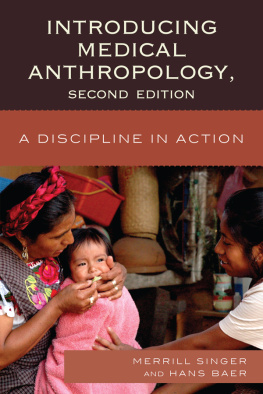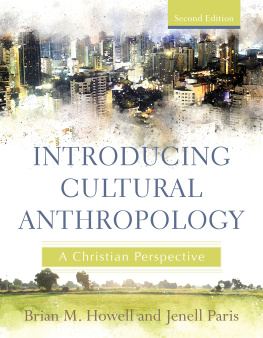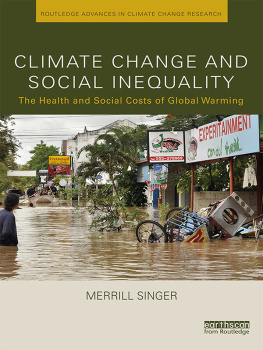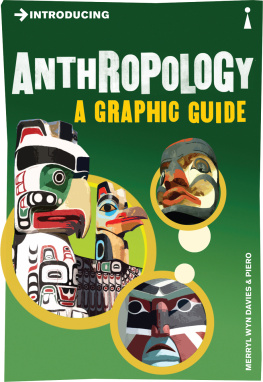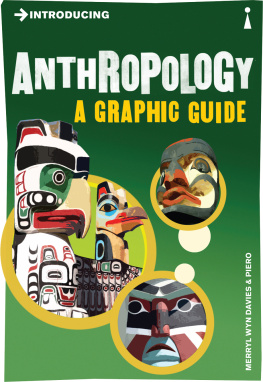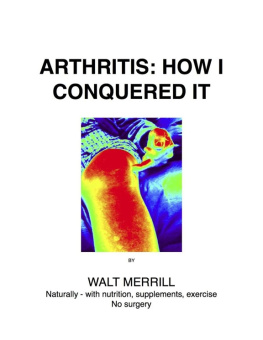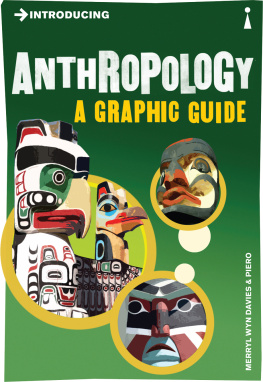Singer Merrill - Introducing medical anthropology a discipline in action
Here you can read online Singer Merrill - Introducing medical anthropology a discipline in action full text of the book (entire story) in english for free. Download pdf and epub, get meaning, cover and reviews about this ebook. City: New York;Lanham;Md;Toronto, year: 2012, publisher: AltaMira Press, genre: Politics. Description of the work, (preface) as well as reviews are available. Best literature library LitArk.com created for fans of good reading and offers a wide selection of genres:
Romance novel
Science fiction
Adventure
Detective
Science
History
Home and family
Prose
Art
Politics
Computer
Non-fiction
Religion
Business
Children
Humor
Choose a favorite category and find really read worthwhile books. Enjoy immersion in the world of imagination, feel the emotions of the characters or learn something new for yourself, make an fascinating discovery.
- Book:Introducing medical anthropology a discipline in action
- Author:
- Publisher:AltaMira Press
- Genre:
- Year:2012
- City:New York;Lanham;Md;Toronto
- Rating:4 / 5
- Favourites:Add to favourites
- Your mark:
- 80
- 1
- 2
- 3
- 4
- 5
Introducing medical anthropology a discipline in action: summary, description and annotation
We offer to read an annotation, description, summary or preface (depends on what the author of the book "Introducing medical anthropology a discipline in action" wrote himself). If you haven't found the necessary information about the book — write in the comments, we will try to find it.
Introducing medical anthropology a discipline in action — read online for free the complete book (whole text) full work
Below is the text of the book, divided by pages. System saving the place of the last page read, allows you to conveniently read the book "Introducing medical anthropology a discipline in action" online for free, without having to search again every time where you left off. Put a bookmark, and you can go to the page where you finished reading at any time.
Font size:
Interval:
Bookmark:
Introducing Medical Anthropology
Introduction to Medical Anthropology
Healing requires a legitimated, credible and culturally appropriate system.
Mildred Blaxter (2004:43)
P eople who encounter the term medical anthropology for the first time often are puzzled by what the term means. Is it the study of how medicine is practiced, what doctors, nurses, or traditional healers from other health care systems actually do? Or is it the study of what it means and feels like to be sick? Perhaps it is the study of folk illnesses in different societies? Might it be the application of cultural knowledge to the actual treatment of diseases? All these questions, in fact, can be answered in the affirmative. Medical anthropology addresses each of these issuesand far more. A starting premise of medical anthropology is that health-related issues, including disease and treatment, how and why one gets sick, and the nature of recovery, are far more than narrow biological phenomenon. These processes are all heavily influenced by cultural and social factors as well. Consequently, medical anthropology has developed a bio-sociocultural approach in its effort to address health as an aspect of the human condition.
To take one example, medical anthropologists ask questions such as the following: Could we really understand the AIDS epidemic and respond to it effectively simply by studying the human immunodeficiency virus, its impact on cells of the body, and medical interventions designed to stop the virus from destroying the immune system? Would we not also need to know how to reach and effectively engage those who are at greatest risk for infection, to figure out the structural and situational factors that contribute to their involvement in risky behaviors, to know how much they know and what they feel about AIDS and how these factors influence their behaviors, and to determine whether the ways we go about interacting with them in the community and in the clinic draws them closer or pushes them away from our treatment programs? In other words, beyond biology it is clear that there are critically important areas of knowledge in the fight against the AIDS epidemic. Now, if we think about the AIDS epidemic as a global problem, with different routes of infection, different populations at risk, different beliefs and behaviors associated with HIV/AIDS in diverse settings, and different health care systems in different parts of the world or even different parts of a single country, we begin to get an initial sense of why a social science like anthropology mightas it certainly hashave a significant role to play in addressing the AIDS epidemic. This is of no small importance as we know from available research showing that HIV/AIDS is destined to take a greater toll on our species, proportionately and in terms of absolute numbers, than the bubonic plague, smallpox, and tuberculosis combined. Consider the epidemic in South Africa. As Didier Fassin (2007:261) points out, In one decade, the rate of HIV infection went from less than 1 percent to over 25 percent of the adult population and AIDS became the main cause of death for men and women between 15 and 49 years of age, with an expected drop in average life expectancy in the country of as much as twenty years. Moreover, the global pandemic has helped to shape the social, cultural, and health worlds of people all over the planet, whether or not they are always aware of it. Within the broader story of the devastating impact of HIV/AIDS, however, there are many differing local narratives that together comprise the complex mosaic of the pandemic. The work of medical anthropologists has been part of that story in many places and the same is true for a vast array of other health issues.
g
Three Case Studies in Applied Medical Anthropology
Coping with Cystic Fibrosis
The Reynolds family has two children. Carl is five, and Stuart is seven. The younger of the two boys has cystic fibrosis (CF), the most common fatal genetic disease in the United States. Cystic fibrosis causes the body to produce a thickened form of mucus that clogs the lungs, leading to repeated bacterial infections and increasing lung damage. While the median age of survival among CF sufferers has been rising, most people with the disease do not live very far into adulthood before they succumb. Day-to-day care of a child with CF commonly falls on family members who must learn to cope with both a painful prognosis and the demands of responding to the patients menacing symptoms, including pounding on the sufferers chest and back for at least thirty-five to forty minutes at a time, two to four times a day, to dislodge mucus. Some burdens fall particularly hard on the siblings of children with CF. Deana Reynold, Stuarts mother, notes one of these burdens that he must endure: When Carls sick, all the phone calls are, Hows Carl? Everybody who sees Stuart [says], Hows your brother doing? And all the presents. Carl gets all the presents. It has to have some kind of effect on him [Stuart]. How (and how well) do families with a child with CF cope? What toll does the disease take on family relations and on the emotional well-being of family members? How are siblings affected by growing up with a chronically ill brother or sister? How can health care providers most effectively communicate with families at various stages in the natural history of CF progression? Having previously studied children with cancer, medical anthropologist Myra Bluebond-Langner (1996) set out to answer these critically important questions. For nineteen months, in the clinic and in their homes, she repeatedly interviewed and observed families that were recruited from the patient rolls of the Cystic Fibrosis Center of St. Christophers Hospital for Children in Philadelphia. She also interviewed attending physicians and reviewed patients medical charts. Like most anthropologists, she immersed herself in the lifeworlds of the people she was studying. Her field notes and taped interviews filled thousands of pages and numerous three-ring binders. In the end, after many months of data collection and careful analysis, she was able to answer the key questions that motivated the study. Additionallyand tellinglyshe was able to use her findings to develop a set of useful guidelines for physicians to use in clinical intervention with families with a CF sufferer. As a result, physicians now have a clearer idea of how best to communicate with families and to assist them in coping with the difficult challenges they face and the weighty burdens they must bear. Like the work of many other medical anthropologists, this work by Bluebond-Langner has helped to make a positive impact in the tangled and often confusing world of health and illness. Addressing conflicts, miscommunications, and other problems in doctor-patient relationships as well as patient access to high-quality, culturally appropriate health care are central issues in medical anthropology. But there are many other concerns as well.
The Bone Crusher
Dengue is a mosquito-borne viral disease found in more than one hundred countries and territories around the world, primarily in tropical and subtropical environments of Latin America, the Caribbean, and Southeast Asia, although a U.S. outbreak occurred in Hawaii in 2001. Current estimates are that each year fifty million to one hundred million people are infected with dengue when they are bitten by either the Aedes aegypti , the mosquito that also transmits yellow fever, or Aedes albopictus mosquitoes. Mosquitoes become infected when they bite people who are infected, and, in turn, they subsequently transmit the infection to other people that they bite. In Southeast Asia and in most of Latin America and the Caribbean, the disease is pandemic, meaning that it is now firmly entrenched in the population and spreading. Malaysia has been particularly hard hit; thousands of people fall victim each year to this disease colloquially knownbecause of the fearsome joint pain it causesas the bone crusher. Other symptoms include stomach pain, headaches, nausea and vomiting, pain behind the eyes, and body flushes. In a more intense and even more frightening form, known as hemorrhagic fever, the sufferers gums, nose, and internal organs bleed.
Font size:
Interval:
Bookmark:
Similar books «Introducing medical anthropology a discipline in action»
Look at similar books to Introducing medical anthropology a discipline in action. We have selected literature similar in name and meaning in the hope of providing readers with more options to find new, interesting, not yet read works.
Discussion, reviews of the book Introducing medical anthropology a discipline in action and just readers' own opinions. Leave your comments, write what you think about the work, its meaning or the main characters. Specify what exactly you liked and what you didn't like, and why you think so.

